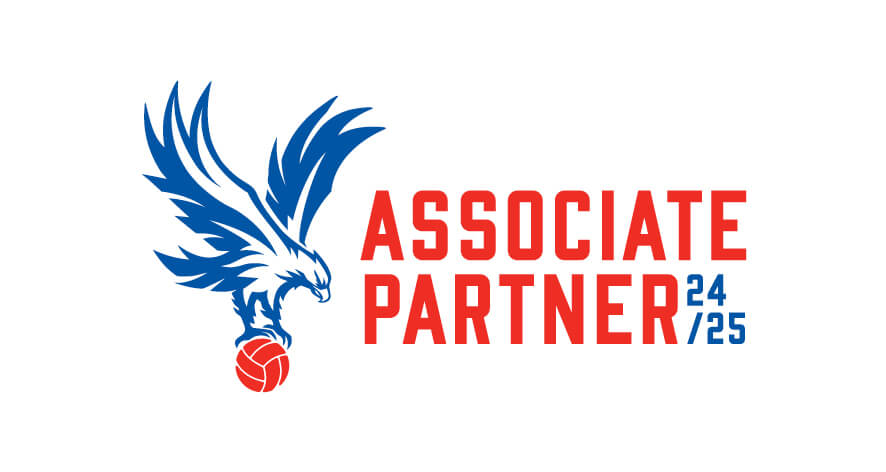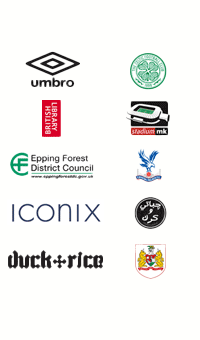Top 10 Worst Health and Safety Myths and Their Origins
In this article we are going to countdown the HSE (Health and Safety Executive) top 10 worst health and safety myths and discover where and how the myths were started. The myths are courtesy of the HSE myth buster panel.
The HSE Myth Busters Challenge Panel
The Myth Busters Challenge Panel was set-up by the The Health and Safety Executive to investigate decisions or advice given in the name of health and safety which could be wrong. Anyone can contact the panel to raise a concern and the panel will investigate with their team of experts and publicly publish their findings.
10. Graduates ordered not to throw their mortar boards in the air
What the HSE Myth Busters Challenge Panel says
Health and safety law doesn’t stop graduates having fun and celebrating their success in the time-honoured fashion!
The chance of being injured by a flying mortar board is incredibly small, and when the concern is actually about the hats being returned in good condition, it’s time to stop blaming health and safety.
How did this myth start?
In 2008, bosses of Anglia Ruskin University, Cambridge banned their students from throwing their mortar boards into the air saying that a student could be seriously injured by a corner of the hat. The ban was put in place after a student needed stitches after being hit in the head a couple of years earlier, although no other incidents had occurred.
A statement on the university’s web site at the time read “It is requested that graduates do not throw the hat up into the air, as this not only caused damage to the hats but can also cause injury if the corner of the hat hits the graduate or others who may be nearby.'”
9. Flip flops being banned from the workplace
What the HSE Myth Busters Challenge Panel says
During the summer, many of us think about wearing sandals or flip-flops to work to help us stay cool. Despite recent reports to the contrary, health and safety law doesn’t ban them.
However, slips, trips and falls do account for about 30% of all workplace accidents, and what you wear on your feet can make a difference. So, if you work somewhere where the floor can’t be kept dry or clean then wearing shoes that fit well and have a good grip would be a better choice than flip-flops.
How did this myth start?
In 2007, bosses at Oldham Council banned staff from wearing flip-flops and sandals to work, citing health and safety. They feared people who wear the flimsy footwear are more likely to trip and injure themselves.
There was another widely reported ban in 2013 for staff working at Plymouth City Council, the reason for the ban was to remind workers to dress appropriately for a working environment. The later report stirred up the flip-flop ban myth again with members of the public citing health and safety reasons for the ban.
Flip-flop bans have also be issued in schools in the UK and the US, all adding to this health and safety myth.
8. Park benches must be replaced because they are three inches too low
What the HSE Myth Busters Challenge Panel says
When we heard this story it really took us by surprise. How could there be health and safety law on this? The simple answer is, there isn’t.
‘It seems that the story originated from a decision by a facility manager and has no basis in health and safety law at all. There are no such bench height requirements and HSE will definitely not be sending our inspectors around measuring the benches!
Well, it looks like Britain’s park benches will survive after all!
How did this myth start?
As the HSE states, this myth originated from a decision by a facility manager. The facility manager in question was Kevin Browne, manager of Bramcote Crematorium in Nottinghamshire. Mr Browne was told by Broxtowe council officials in 2007 to replace 40 memorial benches. An official inspector found that the seats were 14.75in high – 3in lower than the “allowed minimum” and 5in lower than the “optimum” height.
The myth spread that under new health and safety laws, benches must be of a required height so the elderly and disabled can get off them easily. If this law was true then park benches around the UK would have needed to be replaced costing hundred of thousands of pounds.
7. Schoolchildren being ordered to wear clip on ties in case they are choked by traditional neckwear
What the HSE Myth Busters Challenge Panel says
As we said at the start of the last school year, few parents would see wearing ties at school as a safety issue. Millions of children have been wearing ties as part of their uniform for years without any problems.
Simple precautions such as removing the tie during laboratory work or around machinery make sense. But if the concern is really about children fighting, while clip-on ties may help, the real issue is discipline.
So HSE doesn’t ban school ties – it’s up to schools to make their own decisions about uniforms.
How did this myth start?
The myth regarding school ties has been an issue for decades and citing safety reasons for the ban still occur to this day. The concern was finally put to the HSE in September 2010. Clip-on ties, like those worn by police officers, are regulation uniform in many schools across the UK.
6. Hanging baskets being banned in case people bump their heads on them
What the HSE Myth Busters Challenge Panel says
Back in 2004 a town did briefly take down its hanging baskets over fears that old lamp posts would collapse. This was an overly-cautious reaction to a low risk.
However, after quick checks the hanging baskets were replaced and have been on lamp posts in the town every year since.
Despite this, the story continues to be repeated and the danger is someone will believe it is a genuine requirement and follow suit.
How did this myth start?
Suffolk town council ruled there was a risk of hanging baskets falling from lampposts and injuring the public. For almost 20 years the hanging baskets were part of of Bury St Edmunds’ summer floral displays. After totally the weight of the year’s stock, filled with soil and water, the council decided they should be banned altogether on some lampposts as they felt the lampposts could not cope with the added weight of the pots of soil.
5. Candy floss on a stick being banned in case people trip and impale themselves
What the HSE Myth Busters Challenge Panel says
Come the summer sun and what tops off a great day out better than good, oldfashioned candyfloss?
But if you believe some newspaper headlines this beloved sweet treat is under threat – because of the dangers posed by the stick it is spun around.
The truth is that there are no health and safety laws banning candyfloss on a stick.
Is the traditional form of this sweet disappearing because it is easier to mass produce and store it in plastic bags? Who knows, but it certainly isn’t health and safety leaving anyone with a bad taste in their mouth.
How did this myth start?
In 2010, Town Hall chiefs at the town of Southport, Merseyside placed a ban on stall-holders at a popular seaside resort from selling candy floss on wooden sticks because it could be deadly. Sefton Council warned sellers of the sugary treat that children could trip over and fall while eating. The traditional freshly spun candy floss on a stick was replaced with candy floss available in a plastic bag.
4. Pin the tail on the donkey games being deemed a health and safety risk
What the HSE Myth Busters Challenge Panel says
We recently read that the traditional party game ‘pin the tail on the donkey’ is allegedly under threat because parents consider it a health and safety risk.
Not trusting children with drawing pins seems a little overprotective to us. After all, millions of children have been playing traditional party games like this for years without any problems.
Was this just a marketing ploy to drum up sales of party games?
How did this myth start?
This health and safety myth started gaining momentum after discussions at netmums.com which is the UK’s biggest parenting website. The traditional children’s party game pin the tail on the donkey became under threat because experts and members of the web site considered it a health and safety risk.
Retailers also made the claim that parents are increasingly reluctant to put pins into the hands of youngsters. Tesco also stated that Mexican party product piñata was outselling the traditional party game by 70 per cent, which caused concern in itself as piñata players have to batter brightly-coloured objects with a hammer until they burst open and sweets or toys fall out.
3. Trapeze artists being ordered to wear hard hats
What the HSE Myth Busters Challenge Panel says
Despite being widely reported at the time and regularly repeated since, this story is utter nonsense. There never were any such regulations.
Hard hats do an excellent job of protecting building workers from falling debris – but they have no place on a trapeze.
How did this myth start?
This myth started in Europe and found it’s way as a concern to the HSE. During 2003, it was reported that trapeze artists with one of the world’s most famous circuses had been told to start wearing hard hats to comply with new EU safety rules. Circus performers including jugglers, tightrope walkers and other acrobats had been advised to wear safety head wear because of European regulations covering workers employed at heights greater than the average stepladder.
2. Office workers being banned from putting up Christmas decorations
What the HSE Myth Busters Challenge Panel says
Bah Humbug! Each year we hear of companies banning their workers from putting up Christmas decorations in their offices for ‘health and safety’ reasons, or requiring the work to be done by a ‘qualified’ person.
Most organisations including HSE and local councils manage to put up their decorations, celebrating the spirit of Christmas without a fuss. They just sensibly provide their staff with suitable step ladders to put up decorations rather than expecting staff to balance on wheelie chairs.
How did this myth start?
Office workers at Tower Hamlets council in London were banned in November 2006 from hanging up Christmas decorations at work because of the fear that they may get hurt. Climbing to the ceiling to put up paper decorations was forbidden in case of injuries to staff and then the injured person suing the council.
A ban was also placed on the use of fairy lights in a bid to cut power bills and ensure safety standards. Mini-Christmas trees, tinsel and baubles were still allowed – provided there were no lights.
1. Children being banned from playing conkers unless they are wearing goggles
What the HSE Myth Busters Challenge Panel says
This is one of the oldest chestnuts around, a truly classic myth. A well-meaning head teacher decided children should wear safety goggles to play conkers. Subsequently some schools appear to have banned conkers on ‘health and safety’ grounds or made children wear goggles, or even padded gloves!
Realistically the risk from playing conkers is incredibly low and just not worth bothering about. If kids deliberately hit each other over the head with conkers, that’s a discipline issue, not health and safety.
How did this myth start?
As the HSE states, this myth has been around a long time, but a report in 2009 really gave the health and safety myth some traction. Miss Broadhurst, headteacher at Adlington Primary School in Macclesfield, Cheshire insisted that children playing the traditional game at her school should wear goggles to protect their eyes. Parents of children that attended the school condemned the ‘nanny state’ ruling.









